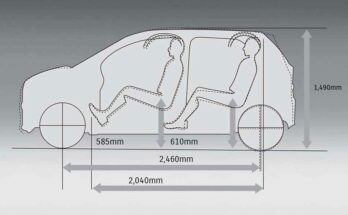Leakage from under the car is one of the most common car problems that everyone seems to be familiar with. The most crucial thing for a car owner is to figure out what the problem is. When there is a leak in your car, it might be any of the fluids that it takes in. However, there are many oils and fluids in your car, so identifying which one is leaking may be a daunting task.
In this post, we will look at various fluid leaks and their symptoms. In addition, this article covers some ways of detecting and repairing car leaks. So the next time you encounter a leak, you won’t be dumbfounded. If the problem isn’t too serious, you’ll be able to diagnose and even solve it.

Coolant Leak
To maintain your engine within its proper working temperature range, it needs a unique fluid to pass through it. In the winter, coolant keeps your engine’s cooling fluids from freezing, and in the summer, it helps cool the engine.
Coolant leaks can be dangerous. You must address the issue as soon as possible since overheating can damage your vehicle’s engine. A leaking radiator hose, a leaking radiator cap, a blown head gasket, or a broken water pump are the most typical causes of coolant leaks.
Symptoms
Color: If you see a green, blue, orange, or even pink puddle under your car, it’s a coolant leak.
Odor: The smell of coolant is sweet.
How to check
The most typical places to look for coolant leaks are under your car, the hose and around the radiator. Examine the components above the puddle for wetness under the hood. Inspect all of your vehicle’s hoses under the hood for damage. You should also inspect the radiator cap to ensure it is in good working order.
How to fix
The first step is to identify the source of the leak because coolant leaks can be caused by a number of conditions. To stop a slow or small coolant leak, use a good radiator sealant. When there is a major leak, no amount of sealant will solve it. Instead, we recommend replacing the leaking part.
If the issue is with a radiator hose, it is a simple fix. You’ll need to replace the damaged hose. If the leak is coming from the radiator itself, and it’s repairable, find someone who knows how to fix radiators. If the radiator cannot be fixed, it must be replaced. If coolant is leaking within your engine as a result of a damaged head gasket, the repair will be costly.
Transmission Fluid Leak
Transmission fluid is used to lubricate the transmission components of a car to ensure peak performance. It lubricates all of the working parts within your transmission. Transmission slippage can occur if there is a shortage of transmission fluid. When you press down on the accelerator, you may experience a delay.
Transmission fluid can leak from a variety of places, including faulty seals, fluid lines, the transmission pan gasket, the transmission drain plug, or the torque converter.
Symptoms
Color: A transmission fluid leak is usually rather evident. It is distinguished by the presence of a red liquid beneath your vehicle.
Odor: If you’re not sure whether it’s transmission coolant or not, smell it.
It’s transmission fluid if it smells sweet and has a red color.
How to check
Spray below the hood with brake cleaner to remove the old transmission fluid. Clean the transmission area thoroughly; if it’s filthy or oily, you won’t be able to discover the leak. Take a short drive, park, and place a cardboard or drip pan underneath it overnight so it can leak into it. Inspect the place where the fluid is dripping in the morning to locate the source.
If you can’t find it, apply baby powder all over the transmission area. And as the fluid leaks, you’ll be able to see the trail and trace it to the cause.
How to fix
So, what should you do if you have a transmission leak? You’ll have to replace the components that are causing the leak. It could be a fluid line, transmission pan, pan gasket, drain plug, or seal. It is strongly advised that you replace the broken components, or the fluid will continue to leak.
Engine Oil Leak
Engine oil serves an extremely important purpose. Its primary tasks within an engine include decreasing friction, wear, and protecting moving parts. Excessive oil loss can result in catastrophic engine damage and costly repairs. Your car’s engine oil may be leaking due to a faulty oil filter, a broken gasket, a faulty drain plug, bad seals, or a damaged oil pan.
Symptoms
Color: The color of engine oil varies. A pool of brown or black fluid beneath your car is usually the first sign of an engine oil leak.
How to check
Placing newspaper under your car overnight and checking for stains in the morning is an easy technique to detect leak spots.
If you still can’t figure out where your transmission leak is coming from, consider using a UV light. Add the recommended amount of UV dye into the engine oil, then drive the vehicle for as long as it takes for the transmission to leak. The UV light should then be used to pinpoint the source of the leak. You’ve discovered your leak location when you observe a bright green dye.
Another option is to clean the engine using a degreaser to locate the leak. Lastly, to locate the leak, you can also use baby powder.
How to fix
You can also use special additives that are beneficial in preventing oil leaks. If the leak is not significant, this method will suffice.
Another repair entails inspecting and ensuring that the oil plug is correctly tightened. Replace worn or damaged drain plug. If the gasket appears to be leaking, you may need to replace it.
Examine the oil filter to ensure that it is securely fastened and free of corrosion. If you notice rust on it, change both the engine oil and the filter.
Brake Fluid
The fluid responsible for moving the various components of your vehicle’s braking system is brake fluid, commonly known as hydraulic fluid. Low brake fluid can impair a vehicle’s braking capabilities, increasing the risk of a collision.
Problems with the master cylinder, ABS, brake line, and brake components are the most common causes of leaks.
Symptoms
Compared to the other three fluids, brake fluid is colorless. It has the consistency of cooking oil and is transparent. This makes it hard to recognize solely on looks.
How to check
To locate the leak, check under the car and perform a complete visual inspection. Inspect the brake lines because they are a common location for a leak to develop. Examine the inside wall of the tires for dampness as well. If you locate one, it may indicate that the leak is coming from the caliper or wheel cylinder.
Press the brakes repeatedly to diagnose a faulty master cylinder. If the pedal drops to rest on the floor, the master cylinder is faulty.
How to fix
The cause of a leak must be identified before it can be repaired. Brake fluid leaks are harmful and should always be treated seriously and repaired as soon as possible. It is recommended that you take your vehicle to a shop to have the system inspected for leaks and repaired.
Final Words
Regular maintenance and routine fluid change are all that is expected to ensure your car’s engine is in good working order. Regular maintenance can alleviate the problems mentioned above and detect these defects on time when they happen.
If you detect any of the symptoms, we recommend that you take your vehicle to a trusted mechanic for an inspection. This is the most cost-effective way to save money and avert a greater problem.
Contributed by: Ryan Mccain

CarSpiritPK welcomes Guest Posts. If you have the ability to generate quality content and can write some relevant and useful piece of information to be shared with our readers, feel free to contact us at: [email protected] Send you emails titled as (Guest Post submission)




